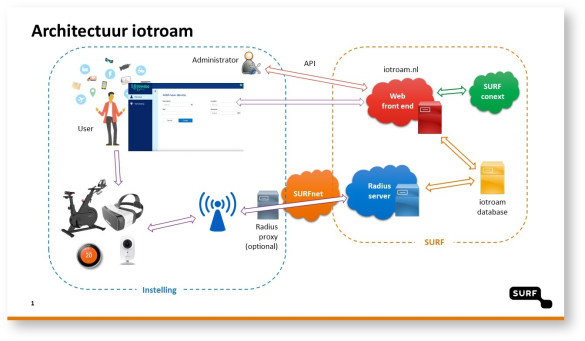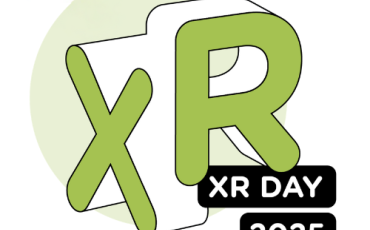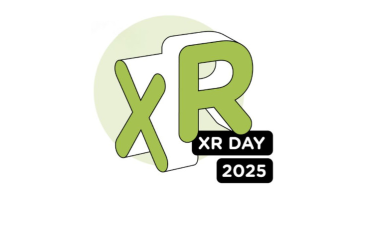1. Iotroam and XR, Thomas Esman (SURF) & Paul Melis (SURF)
The connection between XR hardware and a local network does not occur automatically, and authorization is required for it to be secure. The latter is also the challenge both in within the institution and inter institutional.
Usually, you can use eduroam to connect your laptop to the internet by authorizing via a username and password. Unfortunately, XR devices aren’t aways able to log in in this secure way, or need more connectivity options than eduroam provides, so another method is necessary.
Commercial corporations could develop such a method, but because of the risks it’s not an alluring option. For example, a (possible) vendor lock-in, no roaming between institutions, can’t easily separate devices into groups, custom features are costly and/or take a long time. Hence, the solution developed by SURF: iotroam, the eduroam for (IoT-)devices
An authentication service that is tunable to your security policy and network architecture of the institution. Upsides are scalable, easy to use, easy to manage, traceable devices on the network and works on all Wifi equipment (vendor neutral).
Iotroam facilitates the connection between networks segments
- User registers MAC address of devices in the iotroam portal, each gets assigned a unique password
- Set up the devices themselves with the unique key
- The device connects to the wireless network, SSID iotroam
- Checking if the password and MAC address of a devices match with what is registered in the iotroam database
- You're authorized and set to go!

In the pilot 100 devices are registered in iotroam and 7 institutions are using it for VR. Next step in 2024 making iotroam available for all institutions in the Netherlands as a service. The current pilot phase can still be joined, in case an institution wants to do testing.
2. New wireless technologies and XR, Luuk Goossen (TU Delft) & Tim Kok (SURF)
The goal of the experiments was the exploration of future possibilities of using XR at scale with technologies such as 5G and WiFi 6 in research & education. These new wireless technologies enable new XR use cases for in-the-field research, streaming content from the cloud, and remote collaboration. The testing happened in at the Do IoT fieldlab at the TU Delft and Katwijk. The experiments with 5G focused on streaming and multi-player, as well as the challenges of scaling XR in general.
Experiment Streaming
VR/XR devices have limited resources when it comes to visualizing content. Therefore, the experiment focused on the possibility to use 5G edge servers and compute resources in the cloud to render content, and using the increased bandwidth of the 5G network to stream this content to XR devices.
The requirements were: basic connectivity, no nausea, feel responsive and should handle multiple connections. Virtual Desktop was used to render content and The Lab from Valve was used as a test application.
Results:
-
WiFi 6 and 5G are suited for streaming because there is not much latency and sufficient bandwidth.
-
Discovering and connecting to a remote rendering server needs to be solved for public use.
-
Existing XR software is not scalable due to the network limitations of XR applications.
-
Taking the XR out of the home environment is difficult for, amongst other things, security reasons. For example, firewalls can block discovery and hinder performance.
Experiment Multiplayer
Collaborating in virtual reality requires low latency. During this experiment the test cases explored whether the 5G network could support such collaboration. The requirements were: the ability to see each other, enough responsiveness to throw a ball, and the ability to scale to lots of connections. The testing sites had multiple devices on the same location or two different locations. To test the latency custom projects developed by the XRZone were used.
Results
-
5G’s latency is fine for most education and research apps. Important to keep in mind that latency is a combination of the application, device hardware, network, and server, and generally the network is not the bottleneck.
-
Player discovery on different networks can be hard.
-
Central hosting of the application is necessary.
Conclusion: learning a little bit about networking as an XR developer can help you a lot. You can already experiment with hosting XR applications in the cloud. And soon we will have XR everywhere with 5G & 6G… maybe!
3. Networked XR for education/Research, Ian Biscoe (DAE)
The project focuses on collaborating for a high-quality immersive engagement across multiple physical locations with more than enough reasons. For instance, to support mixed reality distributed design, transdisciplinary research networks and a testbed for future educational intraverses. Intraverses can be interpreted as a more local immersive reality, an opposing metaverse. Foreseeable challenges for this project are the latency in the networks across institutions, in part because of locked down networks.
During the project a connection between the existing XR environments of the Trans Realities Lab (DAE, Eindhoven) and Media Centre (TU Delft) was explored with the following findings on using it in realtime:
-
Institutional LAN’s are not open for innovation: no service discovery supported ethernet based devices.
-
Inter institutional networking challenges were firewalls, IT polices that aren’t focused on opening up and cloud servers that introduce more delay because of the local connection with devices for motion capture.
Experimenting is not over yet. The European project Hybride labs focuses on connecting the network of 4 institutions and partners whom a scattered over Europe.
Expanding the XR Developer Network
Would you like to discuss topics related to eXtended Reality that are on a more technical level, such as development tooling, content creation pipelines, user interfaces in XR, or implementation standards? The XR Developer Network is the community which focuses around the more technical sides of eXtended Reality. The meetings are both online and in-person. The latter to aid in networking and provide for demo opportunities. Note that this does not mean that you need to have a technical background to join the network.
Register with the network by sending an e-mail to xr@surf.nl.




0 Praat mee